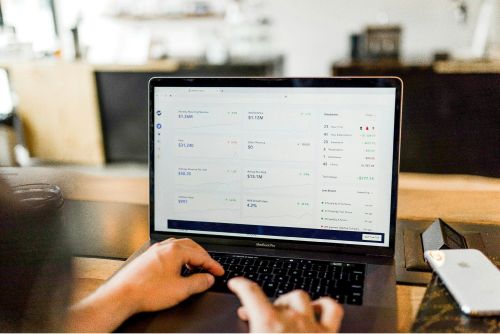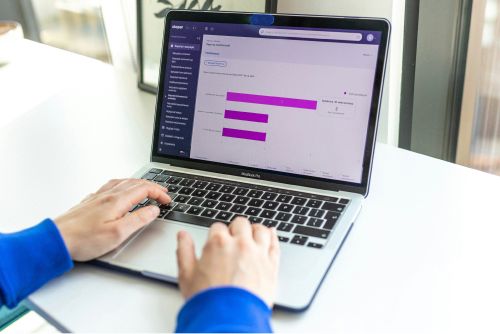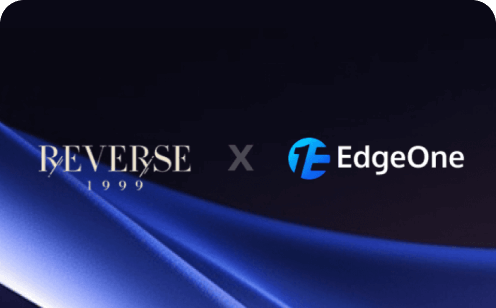100+ E-commerce Glossary of Terms You Must Know
To run a successful e-commerce business, it is essential to have a comprehensive understanding of the various terms and phrases that are used in this field. From managing payments and inventory to providing top-notch customer service and implementing effective marketing strategies, knowing the language of e-commerce is crucial. Below is an overview of 100+ professional e-commerce terms that every e-commerce operator should know.
What are the different types of E-commerce?
1. B2B (Business-to-Business)
The B2B model is a type of e-commerce business model where businesses sell products or services to other businesses. This model is commonly used in the manufacturing and wholesale industries. For example, a business that sells raw materials to other businesses.
2. B2C (Business-to-Consumer)
The B2C model is a type of e-commerce business model where businesses sell products or services directly to consumers. This model is commonly used in the retail industry. For example, a business that sells clothing or electronics to consumers.
3. C2C (Consumer-to-Consumer)
The C2C model is a type of e-commerce business model where consumers sell products or services directly to other consumers. This model is commonly used in the online marketplace industry. For example, a consumer selling their used items on eBay or Craigslist.
4. O2O (Online-to-Offline)
The O2O model is a type of e-commerce business model where businesses use online channels to drive offline sales. This model is commonly used in the food and beverage industry. For example, a restaurant that accepts online orders for pickup or delivery.
5. B2G (Business-to-Government)
The B2G model is a type of e-commerce business model where businesses sell products or services to government agencies. This model is commonly used in the government procurement industry. For example, a business that provides IT services to a government agency.
6. C2B (Consumer-to-Business)
The C2B model is a type of e-commerce business model where consumers offer products or services to businesses. This model is commonly used in the freelance and gig economy. For example, a freelance writer offering their services to a business.
7. B2B2C (Business-to-Business-to-Consumer)
The B2B2C model is a type of e-commerce business model where businesses collaborate with other businesses to sell products or services to consumers. This model is commonly used in the online marketplace industry. For example, a business that sells products through a third-party platform like Amazon or Alibaba.
8. Freemium
The Freemium model is a type of e-commerce business model where businesses offer a basic service for free, but charge for premium features. This model is commonly used in the software industry. For example, a business that offers a free version of their software, but charges for advanced features.
9. Subscription
The Subscription model is a type of e-commerce business model where businesses charge customers a recurring fee for access to a product or service. This model is commonly used in the media and entertainment industry. For example, a business that offers a monthly subscription for access to their streaming service.
10. Crowdfunding
The Crowdfunding model is a type of e-commerce business model where businesses raise funds from a large number of people to finance a project or product. This model is commonly used in the startup industry.

What are the terms used for user analysis in E-commerce?
11. Traffic: The number of visitors to a website or online store.
12. Conversion Rate: The percentage of website visitors who take a desired action, such as making a purchase.
13. Average Order Value (AOV): The average amount spent by a customer per order.
14. Customer Lifetime Value (CLV): The amount of revenue a customer is expected to generate over their lifetime.
15. Churn Rate: The percentage of customers who stop doing business with a company over a given period of time.
16. Acquisition Cost: The cost of acquiring a new customer, including marketing and advertising expenses.
17. Retention Rate: The percentage of customers who continue to do business with a company over a given period of time.
18. Customer Segmentation: The process of dividing customers into groups based on shared characteristics, such as demographics, behavior, or preferences.
19. A/B Testing: The process of comparing two versions of a website or marketing campaign to determine which performs better.
20. Heat Maps: Visual representations of user behavior on a website, showing where users click, scroll, and spend the most time.
21. Funnel Analysis: The process of analyzing the steps a user takes to complete a desired action, such as making a purchase.
22. Cart Abandonment Rate: The percentage of users who add items to their cart but do not complete the checkout process.
23. Search Queries: The terms users enter into a search bar on a website or search engine.
24. Click-Through Rate (CTR): The percentage of users who click on a link or ad after seeing it.
25. Average Session Duration: The average amount of time a user spends on a website or online store during a single session.
26. Exit Rate: The percentage of users who leave a website or online store after viewing a specific page.
27. Referral Traffic: The number of visitors to a website or online store who come from another website or platform.
28. RFM: The RFM model is a marketing analysis tool that uses customer behavior data to segment customers based on their Recency, Frequency, and Monetary value to the business.
29. Reviews and Ratings: The feedback provided by customers on a company's products or services, often displayed on the company's website or a third-party platform.
30. Visit depth: The number of pages a user visits in a store at one time, and the number of page views per session.
What are the terms used for sales analysis in E-commerce?
31. Revenue: The total amount of money generated from sales.
32. Gross Profit: The revenue minus the cost of goods sold.
33. Gross Margin: The gross profit as a percentage of revenue.
34. Net Profit: The revenue minus all expenses, including the cost of goods sold, marketing, and operating expenses.
35. Net Margin: The net profit as a percentage of revenue.
36. Average Order Value (AOV): The average amount spent by a customer per order.
37. Repeat customers: Users who have made transactions in the store and make transactions again are called repeat customers.
38. Conversion Rate: The percentage of website visitors who make a purchase.
39. Cart Abandonment Rate: The percentage of users who add items to their cart but do not complete the checkout process.
40. Repeat Purchase Rate: The percentage of customers who make more than one purchase.
41. Inventory Turnover: The number of times inventory is sold and replaced in a given period.
42. Days Sales Outstanding (DSO): The average number of days it takes to collect payment from customers.
43. Sales Growth Rate: The percentage increase or decrease in sales over a given period.
44. Customer Acquisition Cost (CAC): The cost of acquiring a new customer, including marketing and advertising expenses.
45. Return on Investment (ROI): The ratio of net profit to the cost of investment.
46. Sales Forecasting: The process of estimating future sales based on historical data and market trends.
47. Seasonality: The pattern of sales fluctuations throughout the year.
48. Product Mix: The assortment of products offered for sale.
49. Pricing Strategy: The approach to setting prices for products or services.
50. Competitive Analysis: The process of analyzing competitors' sales performance, pricing strategies, and product offerings.

What are the terms used for logistics analysis in E-commerce?
51. Warehousing: The storage of goods in a warehouse before they are shipped to customers.
52. Inventory Management: The process of managing and tracking inventory levels in an e-commerce operation.
53. Order Management: The process of managing and fulfilling customer orders in an e-commerce operation.
54. Shipping and Fulfillment: The process of packaging and shipping customer orders in an e-commerce operation.
55. Carrier: A company that provides transportation services for goods, such as FedEx or UPS.
56. Freight Forwarder: A company that arranges the transportation of goods on behalf of another company.
57. Last Mile Delivery: The final stage of the delivery process, where goods are delivered to the customer's doorstep.
58. Delivery Time: The amount of time it takes for goods to be delivered to the customer.
59. Tracking Number: A unique identifier assigned to a shipment that allows customers to track the progress of their order.
60. OMS: Order Management System, which is a software platform used to manage and track customer orders and inventory across multiple sales channels.
61. SRM:Supplier Relationship Management, which is a strategic approach to managing relationships with suppliers to improve collaboration, reduce costs, and mitigate risks.
62. QC: Quality Control, which is the process of ensuring that products or services meet the required quality standards through inspection and testing.
63. PCS:Production Control System, which is a software system used to manage and control the production process, including scheduling, inventory management, and quality control.
64. Reverse Logistics: The process of managing the return of goods from the customer to the warehouse.
65. Fulfillment Center: A facility used for the storage and fulfillment of customer orders.
66. Cross-Docking: The process of unloading goods from one truck and loading them onto another for immediate transport.
67. Freight Rate: The cost of transporting goods by a carrier, typically based on weight and distance.
68. Bill of Lading: A legal document that details the shipment of goods and serves as a receipt of delivery.
69. Customs Clearance: The process of clearing goods through customs when crossing international borders.
70. SKU: Stock Keeping Unit, which is a unique identifier assigned to a product to track inventory and sales.
What are the terms used for customer service in E-commerce?
71. Customer Service: The support provided to customers before, during, and after a purchase.
72. Customer Experience: The overall experience a customer has when interacting with a business.
73. Customer Satisfaction: The degree to which a customer is satisfied with their experience with a business.
74. Customer Retention: The ability of a business to retain its customers over time.
75. Customer Loyalty: The degree to which a customer is loyal to a particular brand or business.
76. Customer Feedback: The feedback provided by customers on their overall experience with a business, including customer service, shipping, and product quality.
77. Net Promoter Score (NPS): A metric used to measure customer loyalty and satisfaction.
78. FAQ: Frequently Asked Questions, which is a collection of common questions and answers about a product, service, or topic, provided to help users find information and solve problems.
79. Email Marketing: The process of using email to communicate with customers and promote products.
80. Live Chat: An online chat system that allows customers to communicate with a business in real-time.
81. Help Desk: A system used to manage customer inquiries and support requests.
82. Self-Service: Tools and resources provided to customers to help them find answers to their questions and resolve issues on their own.
83. Complaint Management: The process of managing and resolving customer complaints.
84. Refund and Return Policy: The policies and procedures for handling customer returns and refunds.
85. Personalization: The process of tailoring a customer's experience based on their preferences and behavior.
86. Customer Segmentation: The process of dividing customers into groups based on shared characteristics, such as demographics, behavior, or preferences.
87. Customer Lifetime Value (CLV): The amount of revenue a customer is expected to generate over their lifetime.
88. Customer Acquisition Cost (CAC): The cost of acquiring a new customer, including marketing and advertising expenses.
89. Customer Churn: The percentage of customers who stop doing business with a company over a given period of time.
90. Upselling and Cross-selling: The process of promoting additional products or services to customers to increase sales.
What are the terms used for technology and security in E-commerce?
91. Payment Gateway: A service that processes online payments and transfers funds from the customer to the merchant.
92. SSL (Secure Sockets Layer): A protocol that encrypts data transmitted between a website and a user's browser to protect sensitive information.
93. Encryption: The process of converting data into a coded language to protect it from unauthorized access.
94. Tokenization: The process of replacing sensitive data, such as credit card numbers, with a unique identifier to protect it from theft.
95. Two-Factor Authentication (2FA): A security process that requires users to provide two forms of identification, such as a password and a fingerprint, to access their account.
96. Fraud Detection: The process of identifying and preventing fraudulent transactions.
97. PCI DSS (Payment Card Industry Data Security Standard): A set of security standards established by the payment card industry to protect against credit card fraud.
98. API (Application Programming Interface): A set of protocols and tools used to build software applications and facilitate communication between different systems.
99. Cloud Computing: The use of remote servers to store, manage, and process data.
100. Content Delivery Network (CDN): A network of servers used to distribute content, such as images and videos, to users around the world.
101. Responsive Design: A design approach that allows a website to adapt to different screen sizes and devices.
102. Web Hosting: The service of storing and serving website files on a server.
103. Cybersecurity: The protection of computer systems and networks from theft, damage, or unauthorized access.
104. Malware: Software designed to harm or disrupt computer systems, such as viruses, worms, and Trojan horses.
105. Firewall: A security system that monitors and controls incoming and outgoing network traffic.
106. DDoS (Distributed Denial of Service) Attack: An attack that floods a website with traffic to overwhelm its servers and disrupt its operation.
107. Vulnerability Assessment: The process of identifying and assessing potential security vulnerabilities in a system.
108. Penetration Testing: The process of testing a system's security by attempting to exploit vulnerabilities.
109. Backup and Recovery: The process of backing up data to prevent loss in the event of a system failure or disaster.
Boost your E-commerce business with Tencent Edgeone
Tencent EdgeOne offers an acceleration and security solution utilizing Tencent edge nodes to protect E-commerce industries and enhance user experiences. The following technology can help make your business faster and more secure:
Acceleration: Edge nodes are closer to users, which greatly reduce the data access latency, avoid data transfer jitters, and guarantee the stability and effectiveness during the transfer of massive amounts of data. In addition, EdgeOne has many acceleration features, including dynamic/static data acceleration, cross-border acceleration, and smart route optimization, to efficiently support latency-sensitive businesses.
Security: Security protection services such as WAF and Anti-DDoS are provided. Nodes identify and block various layer-3/4/7 attack requests, cleanse DDoS attack traffic, and use the smart AI engine and bot policy engine to analyze the behaviors of web, bot, and CC attacks and update attack blocking policies. This helps prevent malicious requests from reaching your origin servers and guarantee a smooth and stable access to your business.
Tencent Edgeone has now launched a free trial offer. Click here to start free trial or contact us for more information.

